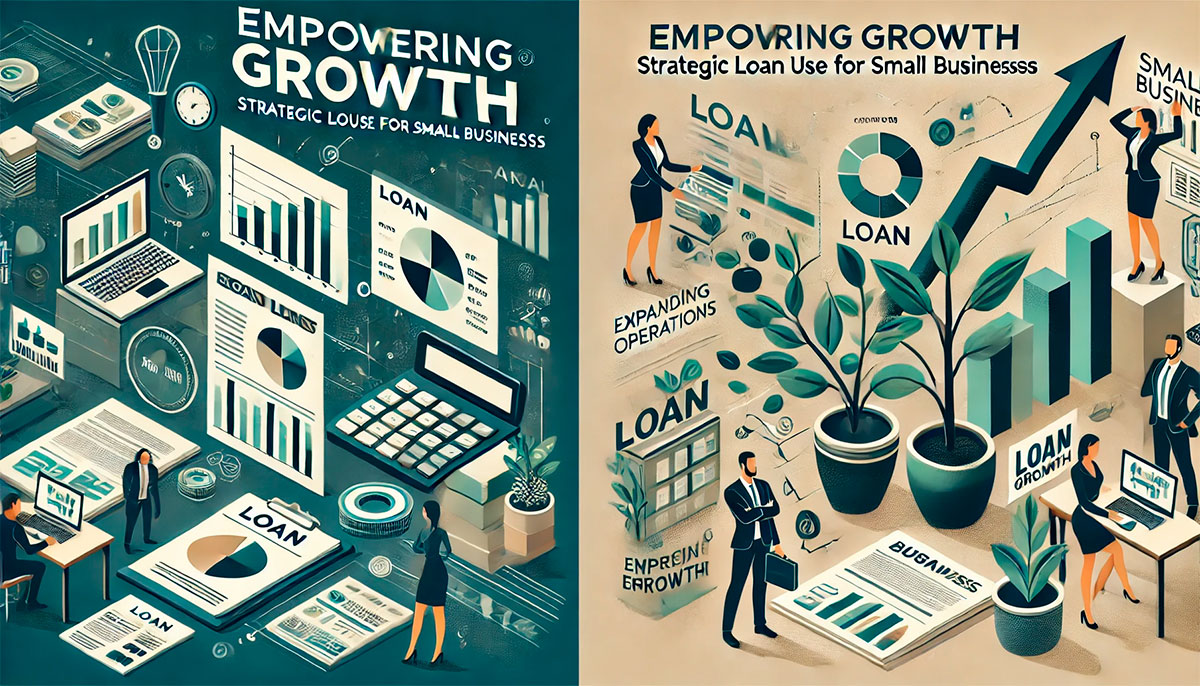For many small businesses, accessing capital through loans can be a critical component of their growth strategy. While loans come with the responsibility of repayment, they also offer an opportunity to expand operations, hire additional staff, invest in marketing, and upgrade technology. In this article, we will explore how small businesses can effectively use loans to facilitate growth and long-term success.
Financing Business Expansion
One of the most common reasons small businesses seek loans is to finance expansion. Whether it’s opening a new location, increasing inventory, or expanding online operations, growth requires capital. A loan can provide the necessary funds to cover upfront costs while allowing the business to grow its customer base and increase revenue.
For example, a restaurant owner might use a loan to open a second location, or a retailer might borrow funds to increase inventory for a busy season. In either case, the loan empowers the business to meet demand and scale operations effectively.
Upgrading Equipment and Technology
Outdated equipment can hinder productivity and slow down operations. Small businesses can use loans to invest in new machinery, software, or technology that enhances efficiency and productivity. Whether it’s upgrading manufacturing equipment or investing in a modern point-of-sale system, these improvements can streamline operations and reduce costs in the long run.
By using a loan to upgrade equipment, small businesses can stay competitive in their industry, meet customer expectations, and improve overall operational efficiency.
Boosting Marketing and Sales Efforts
Marketing is essential for any business looking to grow its customer base. However, effective marketing campaigns often require substantial investment in digital ads, content creation, or branding. A small business loan can provide the capital needed to execute a robust marketing strategy, helping the business reach new audiences and increase sales.
Loans can also be used to hire marketing professionals or agencies that specialize in growing small businesses. With the right marketing initiatives in place, small businesses can achieve higher visibility and build long-term customer loyalty.
Managing Cash Flow and Seasonal Fluctuations
Many small businesses experience seasonal fluctuations in revenue, which can create cash flow challenges during slower periods. A loan can help bridge the gap during these times by providing working capital to cover expenses like payroll, rent, and utilities. This ensures that the business remains operational and can continue to serve customers, even during off-peak seasons.
By using a loan to stabilize cash flow, small businesses can avoid disruptions in their operations and maintain a strong financial foundation throughout the year.
Hiring and Training Staff
As a business grows, so does the need for additional staff. Loans can provide the funds necessary to hire and train new employees, allowing the business to keep up with increasing demand. Investing in talent is critical to maintaining high levels of service and productivity as the company expands.
Whether it’s hiring a team for a new location or expanding a sales force, using a loan for staff expansion can help small businesses meet their growth objectives more quickly and efficiently.

Investing in Inventory
For retail or product-based businesses, having adequate inventory is crucial to meeting customer demand. Small business loans can be used to purchase additional stock, particularly during peak seasons or in preparation for major sales events. By having more products available, businesses can boost sales and improve customer satisfaction.
Loans also allow small businesses to take advantage of bulk purchasing discounts from suppliers, reducing overall costs and improving profitability.
Expanding into New Markets
Breaking into new markets, whether local, national, or international, requires careful planning and sufficient resources. A loan can provide the financial support needed to research new markets, adapt products or services to fit different regions, and establish a presence in new areas.
Expanding into new markets can open up new revenue streams and help small businesses diversify their customer base. With the right loan, businesses can reduce the risks associated with entering new markets and position themselves for sustainable growth.
Building Strong Relationships with Suppliers
Securing favorable payment terms with suppliers is another area where small businesses can use loans to their advantage. Some suppliers offer discounts for upfront payments or larger orders. With a loan, small businesses can take advantage of these opportunities, leading to cost savings and stronger supplier relationships.
These savings can be reinvested into the business, further contributing to growth and improving profit margins.
Developing New Products or Services
Innovation is key to staying competitive in today’s fast-paced business environment. A loan can be used to finance the development of new products or services, including research, prototyping, and testing. By continually offering new and improved solutions, small businesses can attract more customers and retain existing ones.
Loans provide the financial flexibility needed to innovate without disrupting the current operations of the business. This empowers small businesses to stay relevant and competitive in their respective markets.
Conclusion
Small business loans are a valuable tool for growth when used strategically. Whether you’re looking to expand operations, invest in new technology, or improve cash flow, loans provide the capital needed to take your business to the next level. By leveraging loans effectively, small businesses can overcome financial barriers, capitalize on growth opportunities, and achieve long-term success. Careful planning and responsible borrowing ensure that loans serve as a means to empower small businesses and support sustainable growth.



